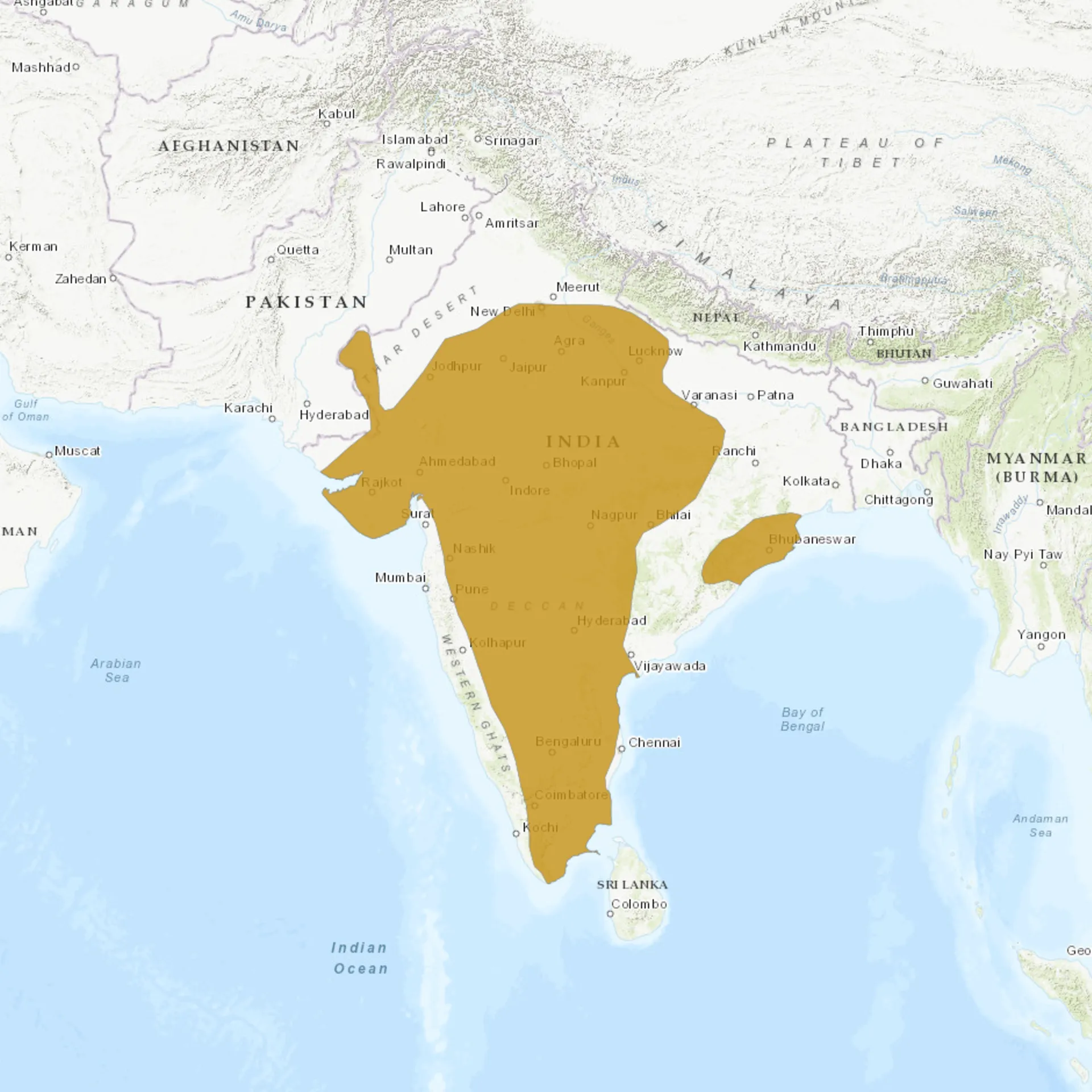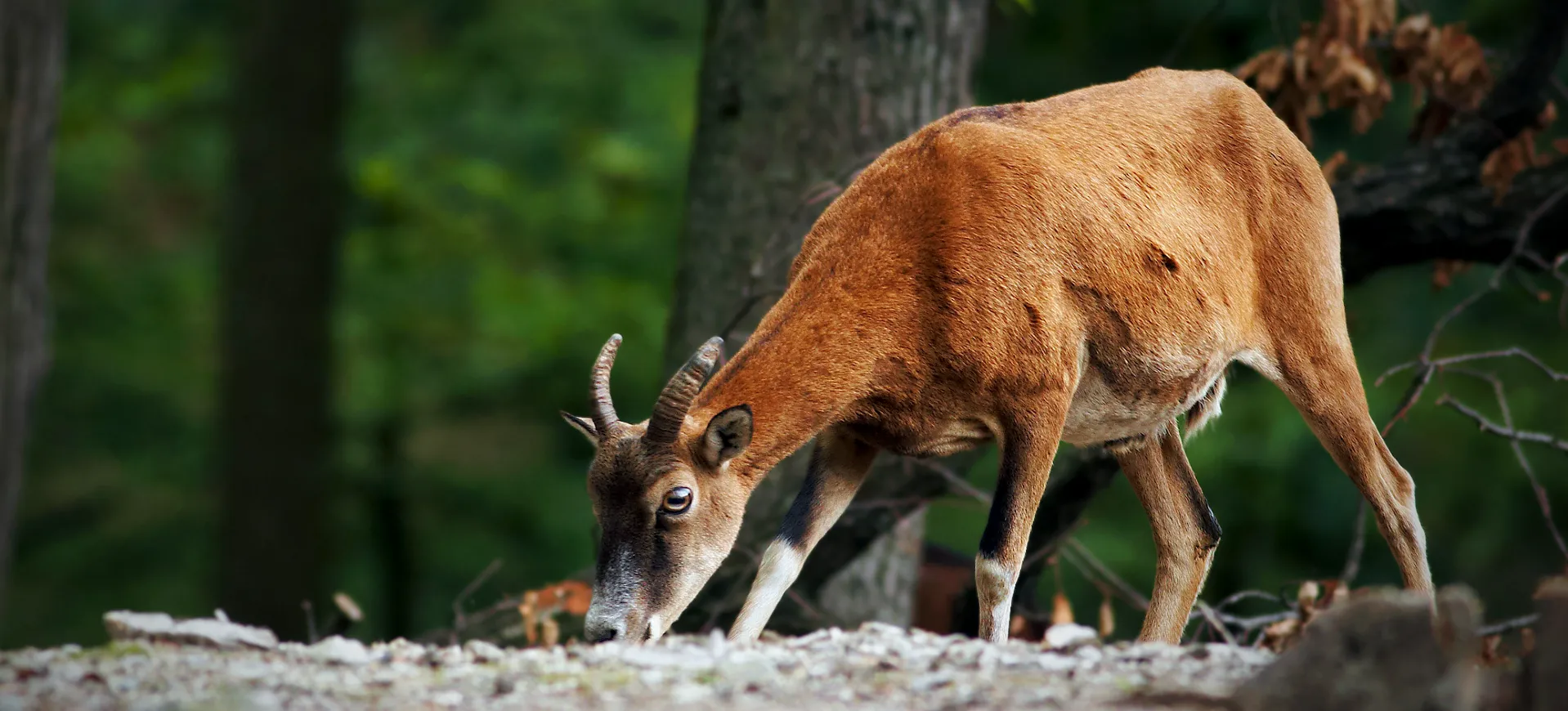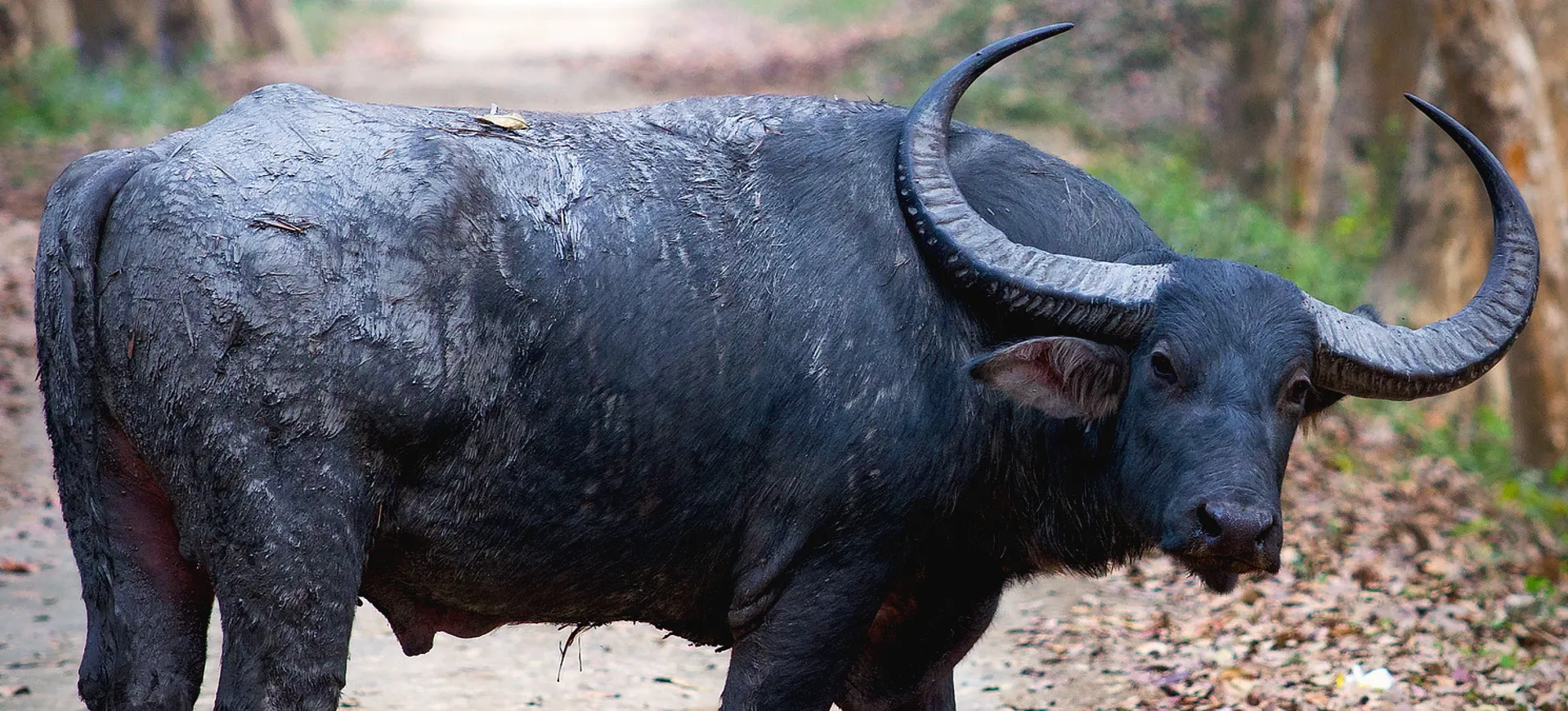Overview
The blackbuck (Antilope cervicapra) is a medium-sized antelope native to the Indian subcontinent, known for its striking color contrast and impressive speed. Males exhibit a distinct black-and-white coloration with spiraled horns, while females and juveniles are tawny brown and lack horns. They are highly social animals, typically forming small herds of females and juveniles led by a dominant male. Blackbucks are diurnal; most of their active hours are spent grazing and seeking shade during the hottest parts of the day.
These antelopes inhabit open grasslands, dry scrublands, and lightly forested areas, favoring regions with short grasses for optimal foraging. They are well-adapted to arid and semi-arid environments, relying on vegetation for moisture intake. Historically widespread across India, Pakistan, and Nepal, their populations have declined due to habitat loss and hunting. Despite this, conservation efforts have led to stable populations in protected reserves and certain agricultural landscapes.
Blackbucks are renowned for their agility and speed, capable of reaching up to 50 mph (80 km/h) to evade predators. They primarily feed on grasses, herbs, and leaves, making them specialized grazers with occasional browsing tendencies. Males establish and defend territories during the breeding season, engaging in displays and fights to attract females. Due to their cultural and religious significance in India, they receive legal protection under the Wildlife Protection Act 1972.
Taxonomy
Kingdom
Phylum
Class
Order
Family
Genus
Species
Type
Current distribution:
Blackbucks are primarily found in India, where they inhabit national parks, wildlife sanctuaries, and open landscapes in states such as Rajasthan, Gujarat, and Maharashtra. Small populations exist in Nepal, particularly in the Bardia region, but they are highly vulnerable due to habitat loss. They were once widespread in Pakistan but are now considered extinct in the wild, with only a few individuals in captivity. Introduced populations have been established in Argentina, Texas (USA), and Australia, where they thrive in controlled environments.
Their numbers have declined significantly due to poaching and agricultural expansion, leading to habitat fragmentation. Conservation laws have helped stabilize populations in India, particularly in protected areas such as Velavadar Blackbuck National Park. However, conflicts with farmers arise when blackbucks graze on crops, leading to localized persecution. Despite conservation successes, continued efforts are necessary to mitigate human- wildlife conflicts and ensure sustainable population growth.
Physical Description:
The Blackbuck is renowned for its distinct sexual dimorphism. The males possess long, spiraled horns, typically between 18 and 37 inches long. They have a two-tone coloration with a deep, chocolate-brown back and sides, a stark white belly, and a white “bib” beneath the snout. As the males age, the brown darkens, eventually becoming black in old individuals, hence the name “Blackbuck.”
Females are much lighter in comparison, typically sporting a yellowish-brown coat all over their bodies except the white belly. They are also smaller in size and typically do not have horns. The Blackbuck’s body is streamlined, with a lightly built, slender form that aids in speed and agility, critical for escaping predators in their open habitat.

Lifespan: Wild: ~10 Years || Captivity: ~18 Years

Weight: Males: 70–95 lbs (32–43 kg) || Females: 55–75 lbs (25–34 kg)

Length: Males: 47–57 in (120–145 cm) || Females: 44–53 in (112–135 cm)

Height: Males: 29–33 in (74–84 cm) || Females: 28–31 in (71–79 cm)

Top Speed: 50 mph (80 km/h)
Characteristic:
Native Habitat:
Blackbucks inhabit open grasslands, savannas, dry scrublands, and lightly forested areas, preferring flat or gently rolling terrain. They avoid dense forests and hilly regions, as their speed and agility are best suited for open spaces. Their habitat selection is largely influenced by the availability of fresh grass, access to water, and the presence of predators. Areas with moderate human disturbance, such as agricultural fields, also support populations where hunting is restricted.
These antelopes thrive in semi-arid regions with seasonal vegetation variations, adapting their movements accordingly. They are found in protected grasslands, dry deciduous forests, and even managed reserves with artificial water sources in India. Their historical range extended across Pakistan and Nepal, but habitat destruction has confined them to fragmented populations. Despite this, they have successfully adapted to some human-modified landscapes, including farmlands and protected parks.
Biomes:
Biogeographical Realms:
Continents:
Countries:
Diet:
Diet & Feeding Habits:
Blackbucks are primarily grazers, feeding on a variety of short grasses, forbs, and leaves found in open plains and scrublands. Their diet consists mainly of graminoids such as Cynodon (Bermuda grass) and Desmostachya, but they will also consume flowers, pods, and fruits when available. They require water regularly but can survive in semi-arid environments by extracting moisture from vegetation. During droughts, they adjust their feeding habits by browsing on shrubs and trees to supplement their diet.
They prefer fresh, tender grass shoots and often migrate within their range for suitable forage. Competition for food with domestic livestock poses a challenge in some areas, as overgrazing reduces food availability. Their feeding activity is most intense during the cooler hours of the morning and late afternoon, avoiding extreme midday heat. Due to their reliance on specific grassland habitats, changes in land use can significantly impact their food resources.
Mating Behavior:
Mating Description:
Blackbucks have a polygynous mating system in which dominant males establish and defend territories to attract multiple females. During the breeding season, males engage in elaborate displays to court females, including posturing, grunting, and chasing. Fights between rival males can be intense, often involving horn clashes and territorial chases. Once a female selects a mate, copulation occurs within the male’s defended territory.
Gestation lasts approximately six months, after which a single fawn is born, though twins occasionally occur. Females give birth in secluded areas, and newborns remain hidden for the first few weeks to avoid predators. The fawns are precocial, capable of standing and walking within hours of birth. Weaning occurs around two to three months, but juveniles may remain with their mothers for extended periods.
Reproduction Season:
Birth Type:
Pregnancy Duration:
Female Name:
Male Name:
Baby Name:
Social Structure Description:
Blackbucks are highly social animals, typically forming herds that vary in size depending on habitat conditions and seasonal changes. Female herds usually consist of adult females and their offspring, while young and non-dominant males form bachelor groups. Dominant males establish and defend territories, especially during the breeding season, marking their boundaries with scent and engaging in displays to deter rivals. These territorial males attempt to attract and mate with females that pass through their defended areas.
Herds exhibit a loose social hierarchy, with dominant males controlling prime grazing and breeding areas. Juveniles stay with their mothers until they are old enough to join bachelor groups or establish territories. Herds may merge or disperse during resource scarcity or increased predator pressure to optimize survival. Group communication involves visual signals, vocalizations, and scent marking, helping coordinate movements and warn against potential threats.
Groups:
Conservation Status:
Population Trend:
The blackbuck population is estimated to be over 35,000 in the wild, primarily concentrated in India. While historically widespread across the Indian subcontinent, their numbers declined drastically due to hunting, habitat loss, and competition with livestock. Conservation efforts, including legal protection and habitat restoration, have led to stable or increasing populations in some regions, particularly within protected areas. Despite this, localized declines still occur where agricultural expansion and poaching persist.
Wild populations are nearly extinct outside India, with only a small, vulnerable group in Nepal. In Pakistan, blackbucks have been extirpated in the wild, though captive breeding programs aim to reintroduce them. Introduced populations in Argentina, Texas, and Australia have flourished under controlled conditions, sometimes surpassing native numbers. While these non-native populations thrive, they do not contribute to the species’ survival in its original range, making in-situ conservation efforts crucial.
Population Threats:
Habitat loss due to agricultural expansion and urbanization is one of the most significant threats to blackbuck populations. As grasslands are converted into farmland, the availability of suitable grazing areas decreases, forcing blackbucks into fragmented habitats. Overgrazing by livestock further reduces food resources, increasing competition and making survival more difficult. In some regions, fencing and infrastructure development restrict their movement, leading to isolation and reduced genetic diversity.
Poaching and illegal hunting remain persistent threats despite legal protection under India’s Wildlife Protection Act of 1972. Blackbucks have historically been hunted for their meat, skin, and horns. In some areas, they are killed in retaliation for crop damage. Predation by feral dogs and other carnivores also contributes to mortality, especially among juveniles. Climate change, including increased drought frequency and habitat degradation, further exacerbates wild populations’ challenges.
Conservation Efforts:
Blackbucks are legally protected under the Wildlife Protection Act of 1972 in India, which prohibits hunting and trade of the species. Several national parks and wildlife sanctuaries, such as Velavadar Blackbuck National Park and Ranebennur Blackbuck Sanctuary, have been established to provide safe habitats. Community-based conservation programs have also been implemented, encouraging local participation in habitat restoration and anti-poaching measures. Captive breeding programs in zoos and wildlife reserves contribute to population stability and potential reintroduction efforts.
Reintroduction projects have been undertaken in Nepal and Pakistan to restore populations in former habitats. In India, habitat management strategies focus on maintaining open grasslands and controlling livestock grazing to prevent competition. Awareness campaigns and strict legal enforcement help curb poaching and illegal trade. Despite these efforts, continuous monitoring, habitat connectivity, and human- wildlife conflict mitigation remain essential for the species’ long-term survival.
Additional Resources:
Fun Facts
- The Blackbuck is the state animal of several Indian states, including Punjab, Haryana, and Rajasthan.
- Blackbuck males are famous for their lekking behavior, where they display themselves and their fitness on a “lek” to attract females.
- Blackbucks have a unique galloping style called “pronking” or “stotting”, where they leap high in the air with an arched back and stiff legs.
- They have one of the longest horns among antelopes, with some reaching up to 28 inches.
- Blackbucks can survive without water for long periods, getting their required hydration from the plants they eat.
- They have excellent vision, which allows them to spot predators from a distance.
- Blackbuck populations in Texas, USA are descendants of few individuals brought there for hunting.
- Male blackbucks change their color as they age, starting from a light brown color and gradually turning black.
- Despite being an antelope, the Blackbuck is part of the same family as goats, sheep, and cows.
- They are extremely agile and can clear fences over 6 feet tall with ease.



















































































